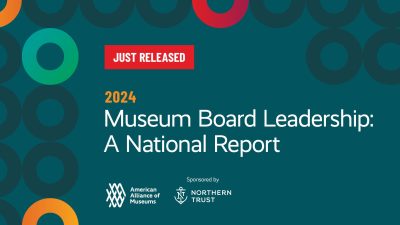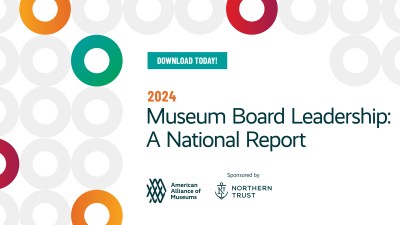
In the January 2018 special issue of Curator: The Museum Journal, several authors explore the issue of ivory and what it means to museums collections today. Here’s a review from the Editor John Fraser and the Guest Editors for the Special Issue: Cheryl Braunstein, Holly Trusted and Scott Miller.
For museum professionals, the topic of provenance is paramount. Where did an object come from? How did the institution acquire it? What is its history? Provenance can be uncomfortable to discuss—art looted by the Nazis, antiquities taken from Egypt and Greece, and collections that contain sacred objects and human remains. Guidelines, laws, and best practices have been developed to help cultural institutions as well as those who have been victimized come together to remedy past wrongs—ideally without losing a collection’s impact on museum visitors. Today, many museums, especially art and history museums, are challenged by maintaining and displaying materials with a different yet still uncomfortable past—ivory objects whose living sources are now threatened by human greed and destruction.
In the January 2018 special issue of Curator: The Museum Journal, authors from a variety of disciplines and institutions have come together to consider ivory and what it means to museum collections today. This issue follows upon the 2016 AAM Annual Meeting & MuseumExpo session “The Elephant in the Room: What Can We Do With Our Ivory.” Moderated by Scott E. Miller, Deputy Under Secretary for Collections and Institutional Support at the Smithsonian Institution, the session included speakers from various Smithsonian units as well as Stephen Knerly, legal counsel to the Association of Art Museum Directors. Over the course of the session, discussions focused on how recently enacted changes to ivory import rules affect museum policies and practice, and how the poaching crisis can bring together institutions across the spectrum to inspire visitors around a single topic.
For natural history museums, ivory is a logical way to connect visitors to the modern biodiversity crisis. These museums are associated with conservation biology and the rise of environmental awareness; ivory is a powerful tool through which visitors can be engaged and better understand the human impact on Earth. For art and history museums, however, ivory is a more nuanced material. Carved ivories demonstrate exceptional craftsmanship carried through cultures for centuries. Carvings are deeply connected to cultural meaning and have evolved from figures and designs associated with royalty and religion to those that tell a historical story of colonization and slavery.
Skip over related stories to continue reading articleMuseums have a fundamental role in education and are a powerful tool in storytelling. Natural history museums have species in their collections such as the dodo bird, Stellar’s sea cow, and passenger pigeon that chronicle the perils of human overexploitation. History museums, similarly, are comprised of collections that examine change; within their walls, themes are focused on societies pre- and post-industrialization. These museums serve as important venues to think about the questions that are arising now about an uncertain future. And art museums look at people through an entirely different lens—through our diverse ways of expressing ourselves, our ideas of beauty, and our many fundamental beliefs. The singular medium of ivory transcends all of these concentrations; within museum collections, it simultaneously represents the natural, historical, and artistic worlds.
Through this special issue of Curator: the Museum Journal and the editorials and articles found within it, the conundrum of ivory is explored in such a way that the world of conservation comes together; art and history museums join forces with zoos and natural history museums to consider the past and understand our shared role in protecting the natural world for the future.
Articles from curators and staff at the Adler Planetarium, Carnegie Museum of Natural History, Walters Art Museum, Germany’s Bayerisches Nationalmuseum, Italy’s Palazzo Madama, and the Smithsonian’s National Museum of African Art and National Museum of American History all provide insight into an approach to museum education and interpretation that gives new relevance to ivory collections—what such materials have to teach us about the past, and what they represent for a species’ existence in the future. Through these articles, as reflected in many conversations in museums around the globe today, the importance of maintaining and conserving ivory collections is profoundly clear. But these collections can be given a new and more modern relevance that puts them into a broader context. Today’s professional discourse, meetings, literature, and exhibitions are evidence for how museum exhibitions and scholarship on ivory can explore themes more holistically. Through a material such as ivory, museum professionals can work with staff at zoos and other conservation organizations to demonstrate that we can preserve culture, learn from history, and, at the same time, advocate for conservation. Elephant conservation is not anathema to the conservation of ivory collections. In fact, the two are best served by our ability to work toward them collaboratively.
Returning to the subject of provenance, there is no denying that ivory today raises profoundly uncomfortable questions. It only comes from one source—an elephant that has died, either naturally or at the hands of a hunter. That story is the discussion today. We can look at what was looted art as objects that retain mesmerizing beauty while recognizing the links to dark episodes in human history. The association with history does not detract from the artwork but allows their meanings to be magnified into even more significant pieces of a museum’s collection. Ivory materials—whether billiard balls, scientific instruments, or royal scepters—can only have come into being from death. Are more visitors today looking at them and seeing them as objects tied to a grisly past? That is the elephant in the room. In our public spaces and through compassionate dialogue and thoughtful interpretation, curators and museum professionals have the power to speak to this discomfort and this conundrum. Ivory is beautiful and visitors should see that; at the same time, we should all see that its source is in dire need of the same commitment to conservation provided to the objects under the care of the museum community. We invite you to read the January 2018 issue of Curator: The Museum Journal and join us in furthering the discussion.








Comments